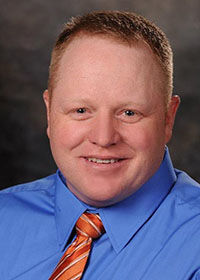Horses evolved in the North American landscape but went functionally extinct towards the end of the Pleistocene. Horses were then re-introduced to North American and many have become wild on western ranges. Their numbers are growing and so is the damage they are causing. We talk with range scientist Eric Thacker about the growing number of wild horses across the west and the need for horse management in order to maintain the fragile ecosystems they graze on.
Science Moab: Can you explain what makes these formerly domestic horses different from other truly wild animals?
Thacker: Wild horses are reproducing at a rate of 15 to 20% annually. They’re off the charts in terms of reproductive potential, so you’ve got this species that’s able to reproduce at a rate faster than any of its large mammal counterparts. It also lives as long or longer than its counterparts. And it is afforded more legal protection than any of its counterparts.
Science Moab: Are the horses in ecosystems that can handle having them?
Thacker: Horses evolved as a grassland steppe species. Few of our wild horses today are in grassland steppes. Most horses are in semi-deserts, sagebrush steppe, or some other shrub-dominated system: ecosystems that didn’t evolve with horses. To me, this is where the argument for management comes in, to make sure those habitats are protected. There’s also no strong population regulatory mechanism in wild horses. Other native ungulates have checks and balances within their population growth structure which help curb population. There’s even a whole predator community set up to help reduce those populations, but horses have no natural predators in North America.
Science Moab: Can you help us visualize the degradation that happens in these fragile ecosystems when large animals like these horses have been there a long time?
Thacker: First, they eat too much of the grasses, which can’t stay healthy because they can’t replenish their roots. There’s also increased trampling, which increases soil density and slows the infiltration of water into the soil. Those two things feed back on themselves, so the soils become drier than they were previously, the animals are still there, the pressure on the remaining grasses increases. Then as the horses start running out of the forage they prefer, they start switching to other things, impacting the forage base of other species. Now, the system is reaching a point where it probably won’t recover without some significant input. Simply removing horses at this point won’t fix the problems. A lot of the areas with wild horses may have already crossed that threshold. And so it’s going to take incredible effort on our part to rebuild those systems. As a range ecologist, this is my biggest concern. As we lose that vegetation, we lose the ability to have many habitats which are affected by these degraded rangelands. At some point, you start losing soil through erosion, and soil takes an incredibly long time to rebuild and form. So these systems are reaching a point where they probably won’t fully recover.
Science Moab: Is there a relationship between cattle management and wild horse management on public lands?
Thacker: I hear arguments from horse advocates [comparing horses and cattle]. There’s a certain amount of space and forage allotted for both cattle and horses by Congress, so we should think about horse and cattle management in conjunction. The Bureau of Land Management has set numbers to maintain some level of sustainability, and simply removing cattle doesn’t solve the problem we’re experiencing, as horses are still a problem. We still have too many animals, meaning we still have degraded systems. The difference between cattle and horses is that the BLM has ultimate control over how cattle grazing looks. They determine the timing and number of animals. With horses, there’s no current management mechanism that allows the BLM to be that flexible. Arguing over whether we should have more cows or more horses on ranch land is irrelevant until we solve the problem of how to manage wild horses.
Science Moab: How does the future look for horse management?
Thacker: The pessimistic view is that this problem could continue to grow because we can’t find the consensus on an appropriate way to manage horses and really deal with the problem. However, there’s a group called The Path Forward. It’s an interesting group that formed a management strategy, lobbied Congress, and received 21 million additional dollars for wild horse management in 2020. But the basic premise of that whole management plan is that if we don’t do something now, this problem is only going to get much worse.
Science Moab is a nonprofit dedicated to engaging community members and visitors with the science happening in Southeast Utah and the Colorado Plateau. To learn more and listen to the rest of Eric Thackers’s interview, visit www.sciencemoab.org/radio. This interview has been edited for clarity.



